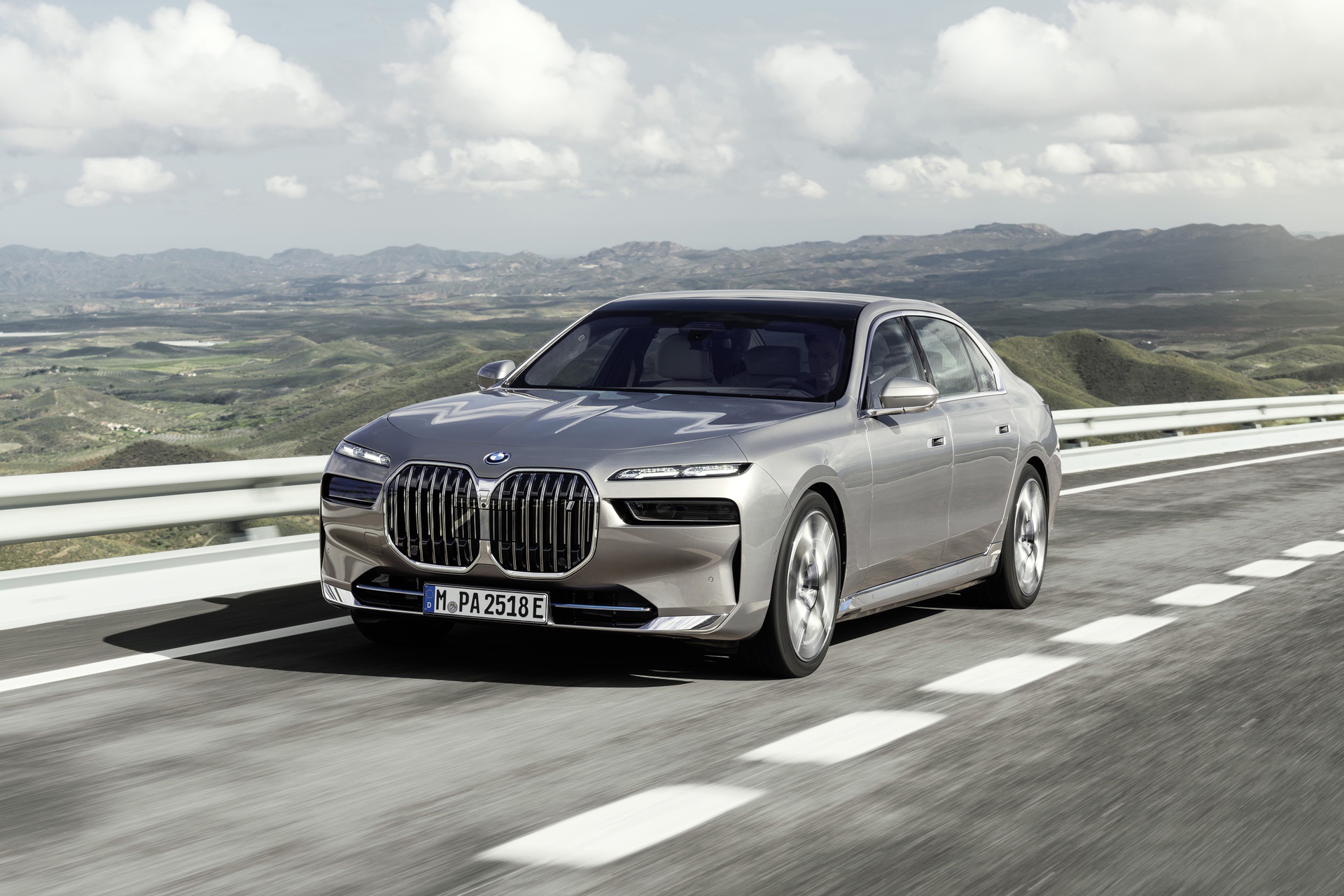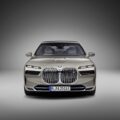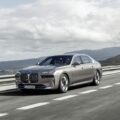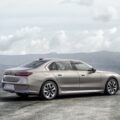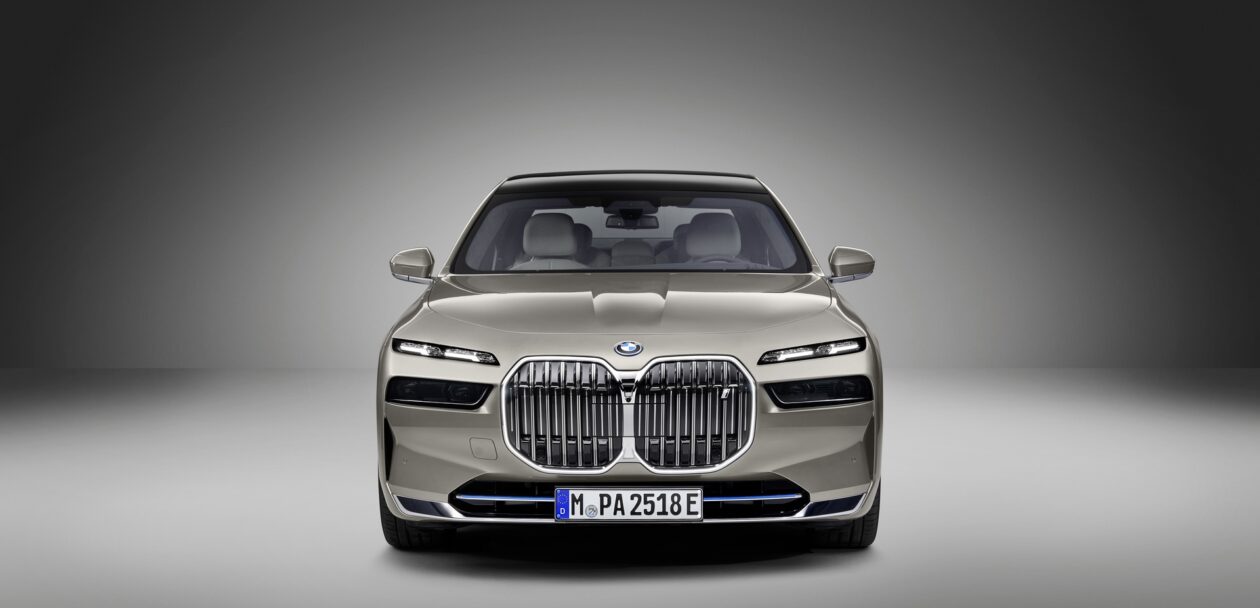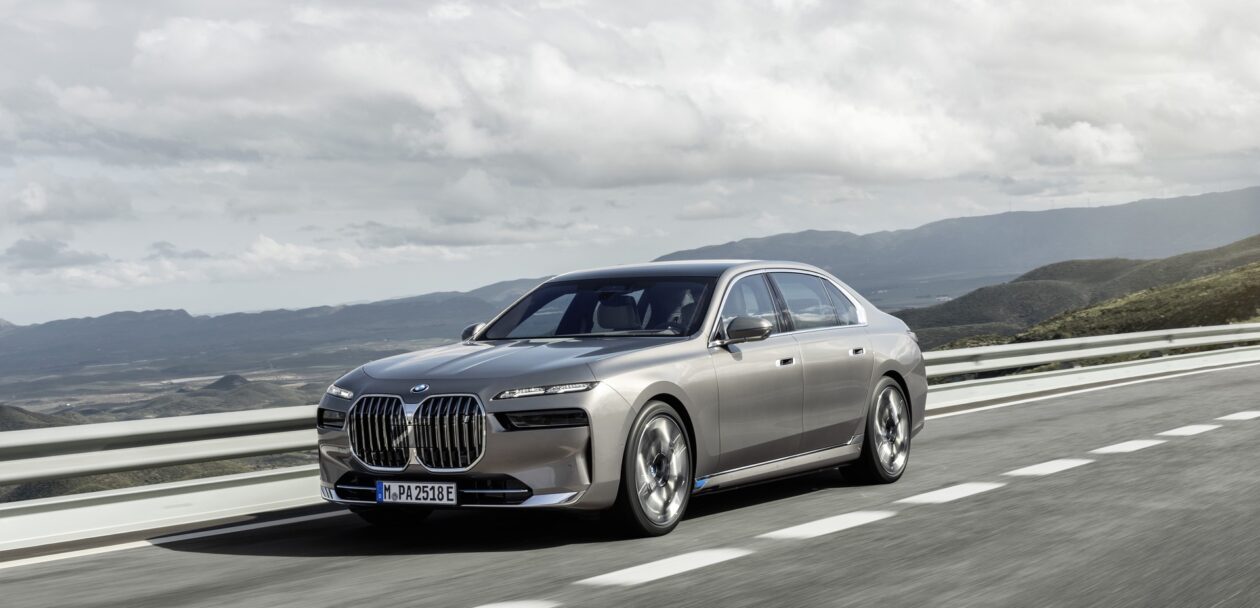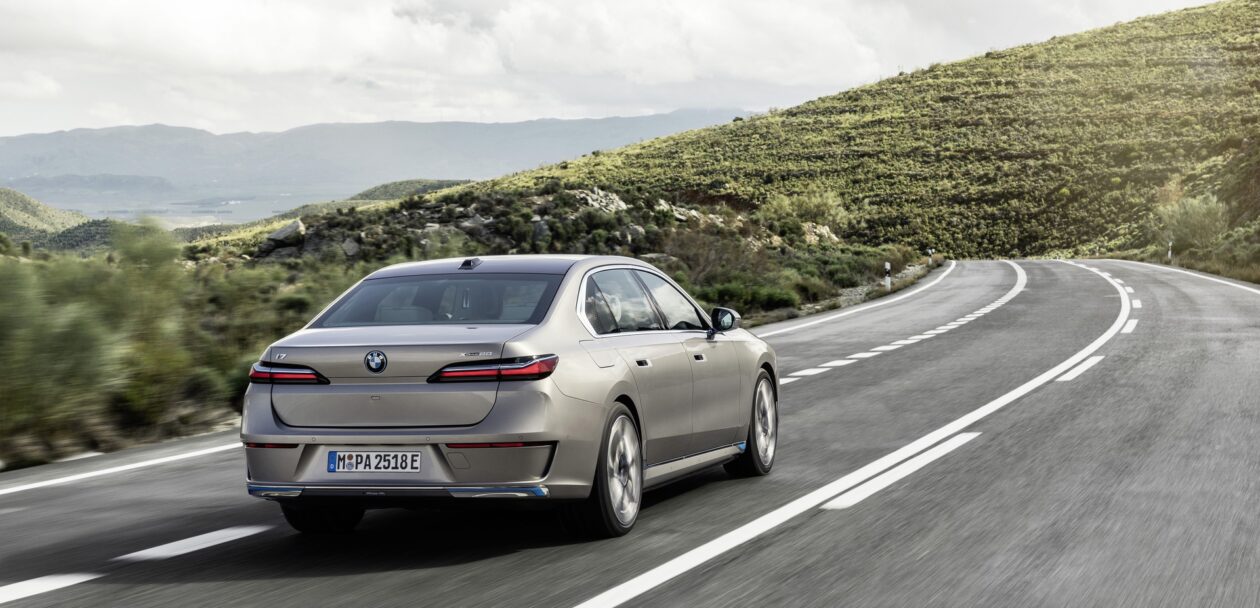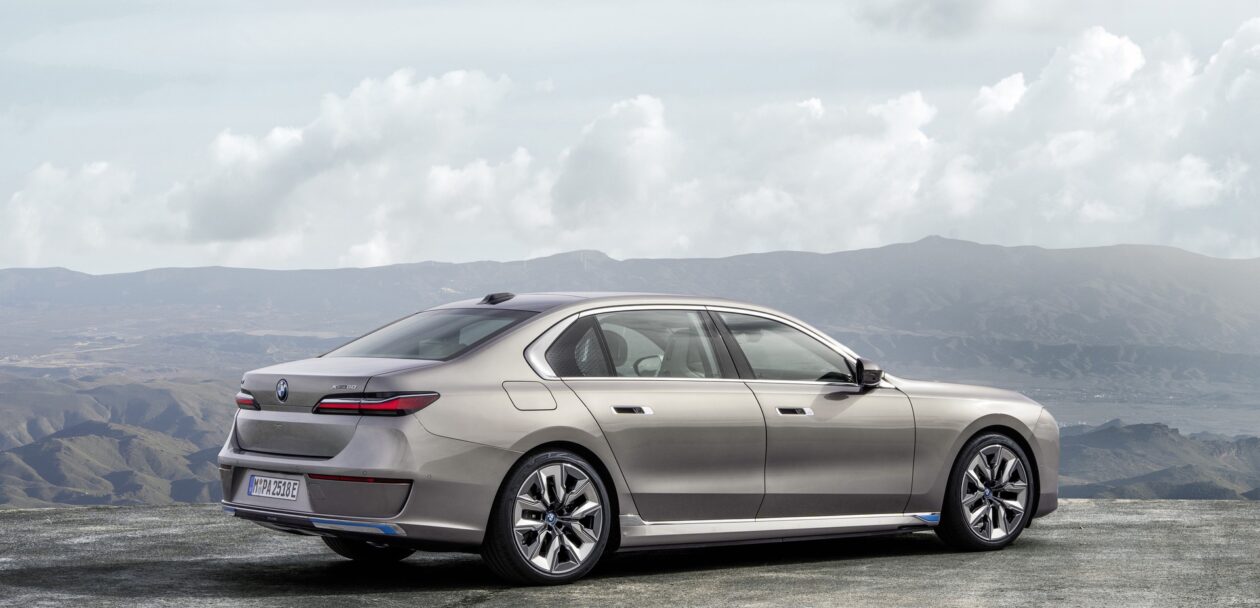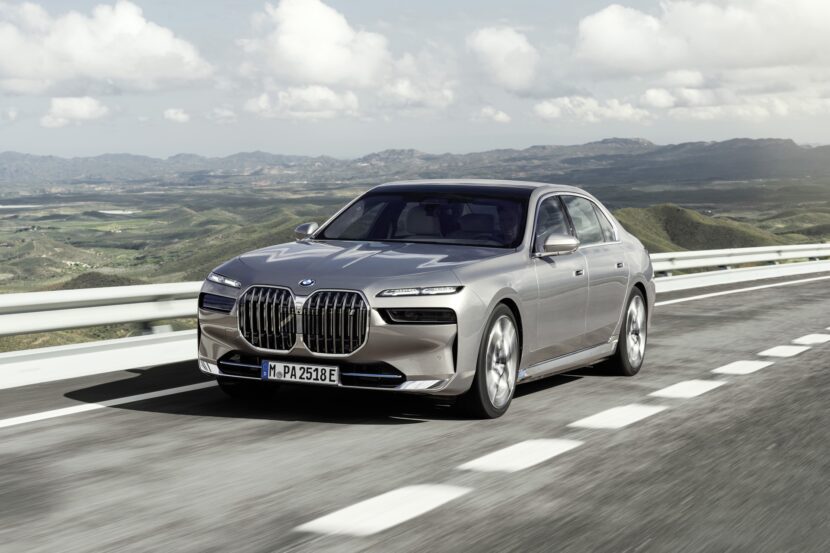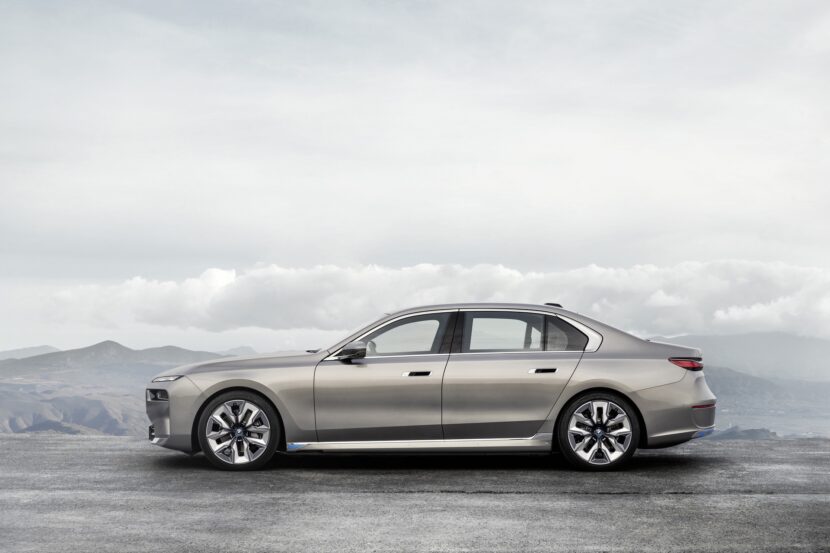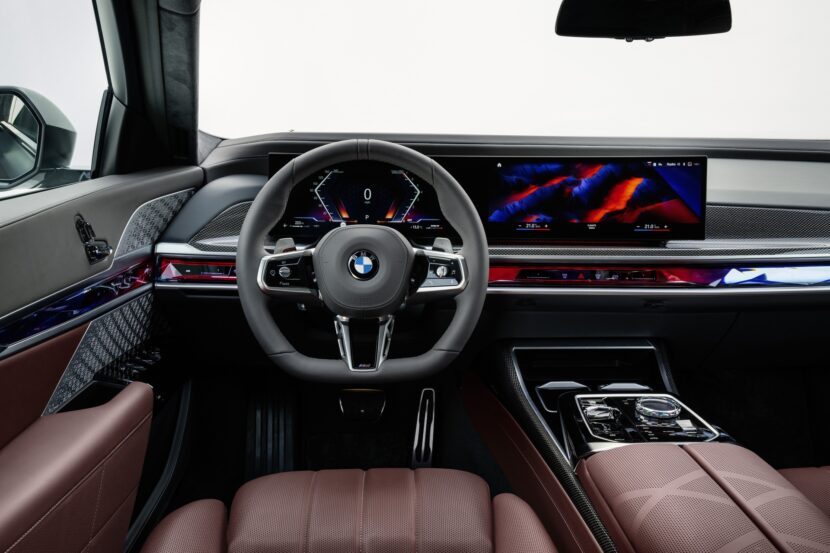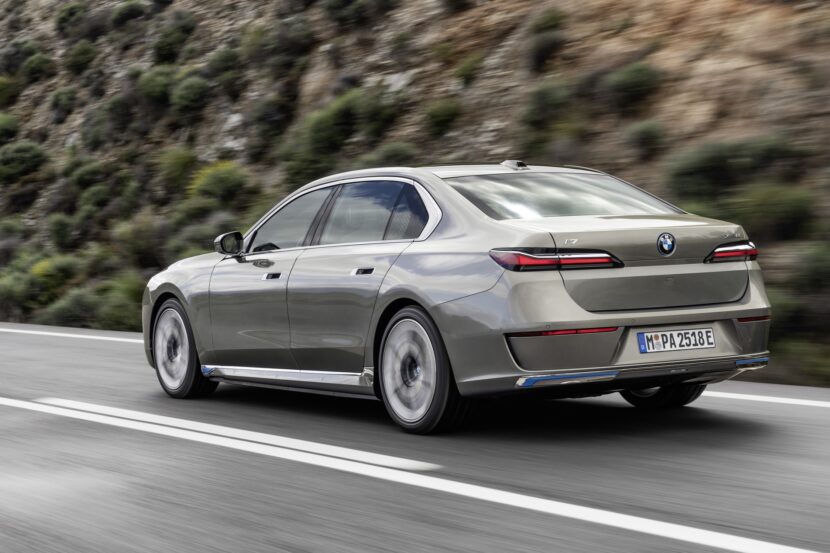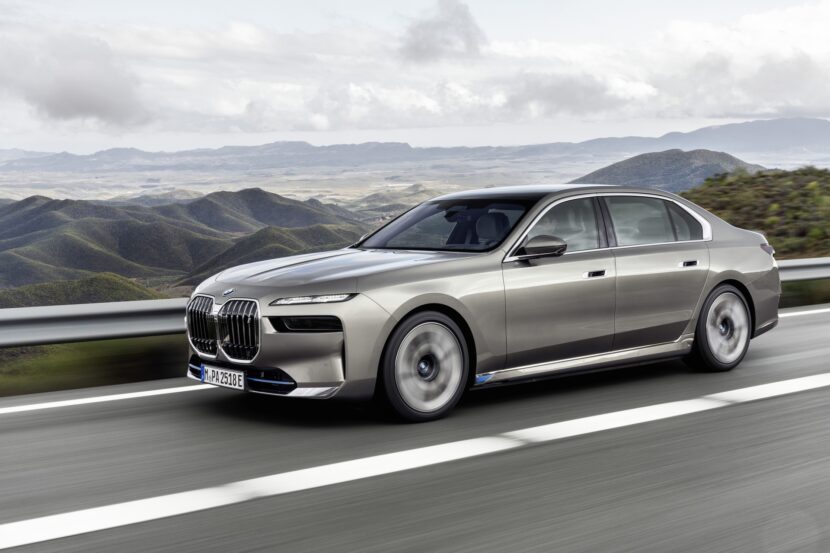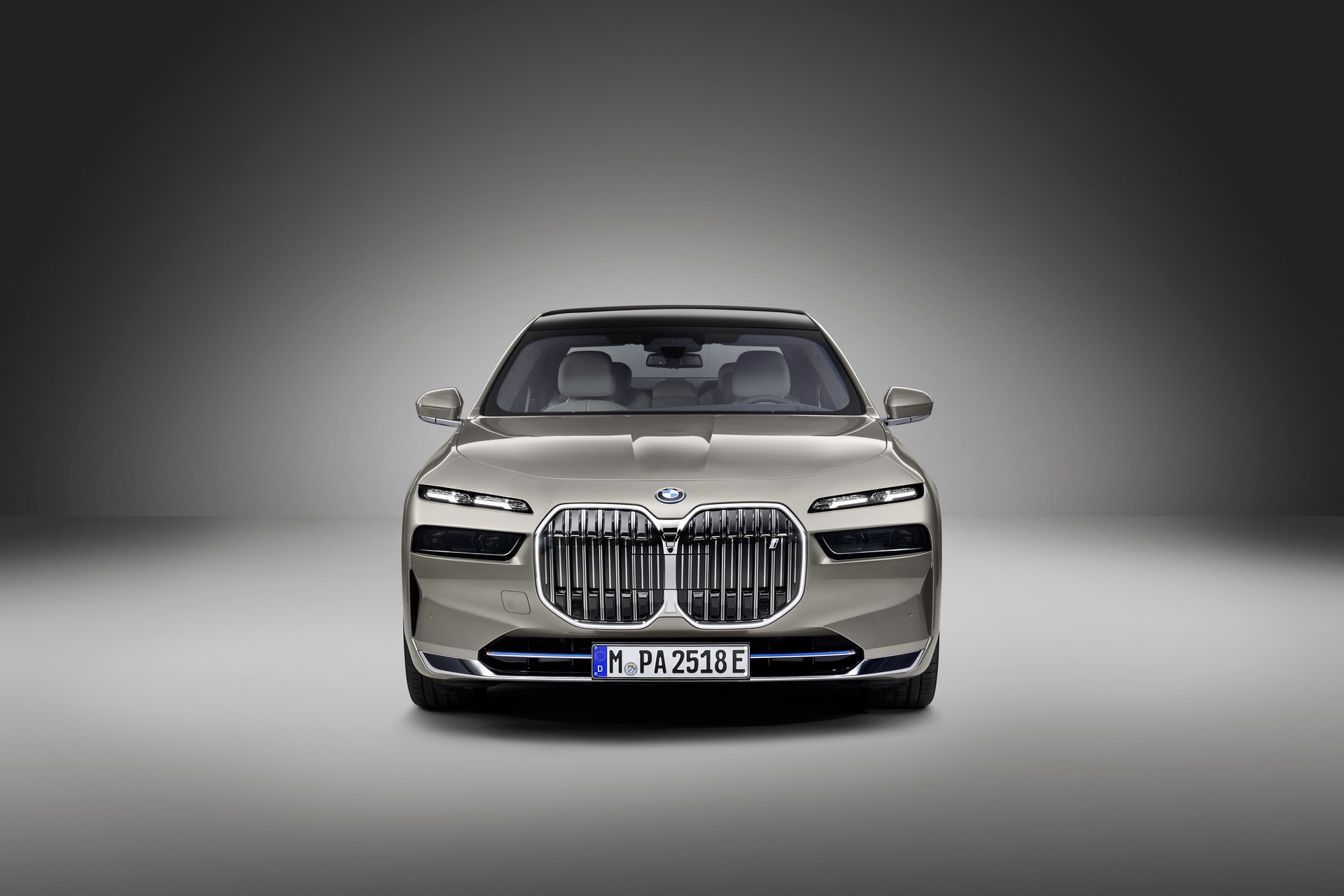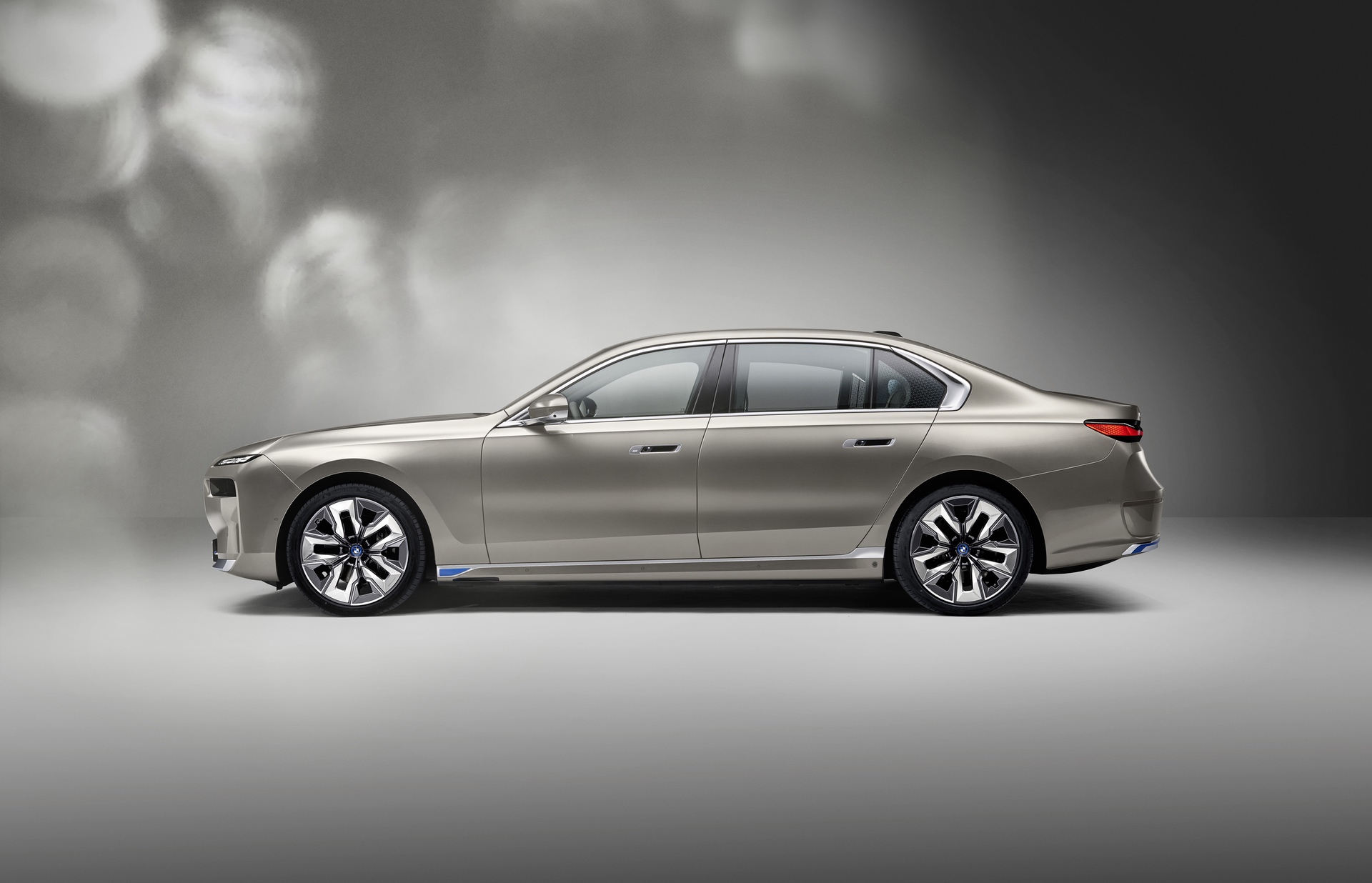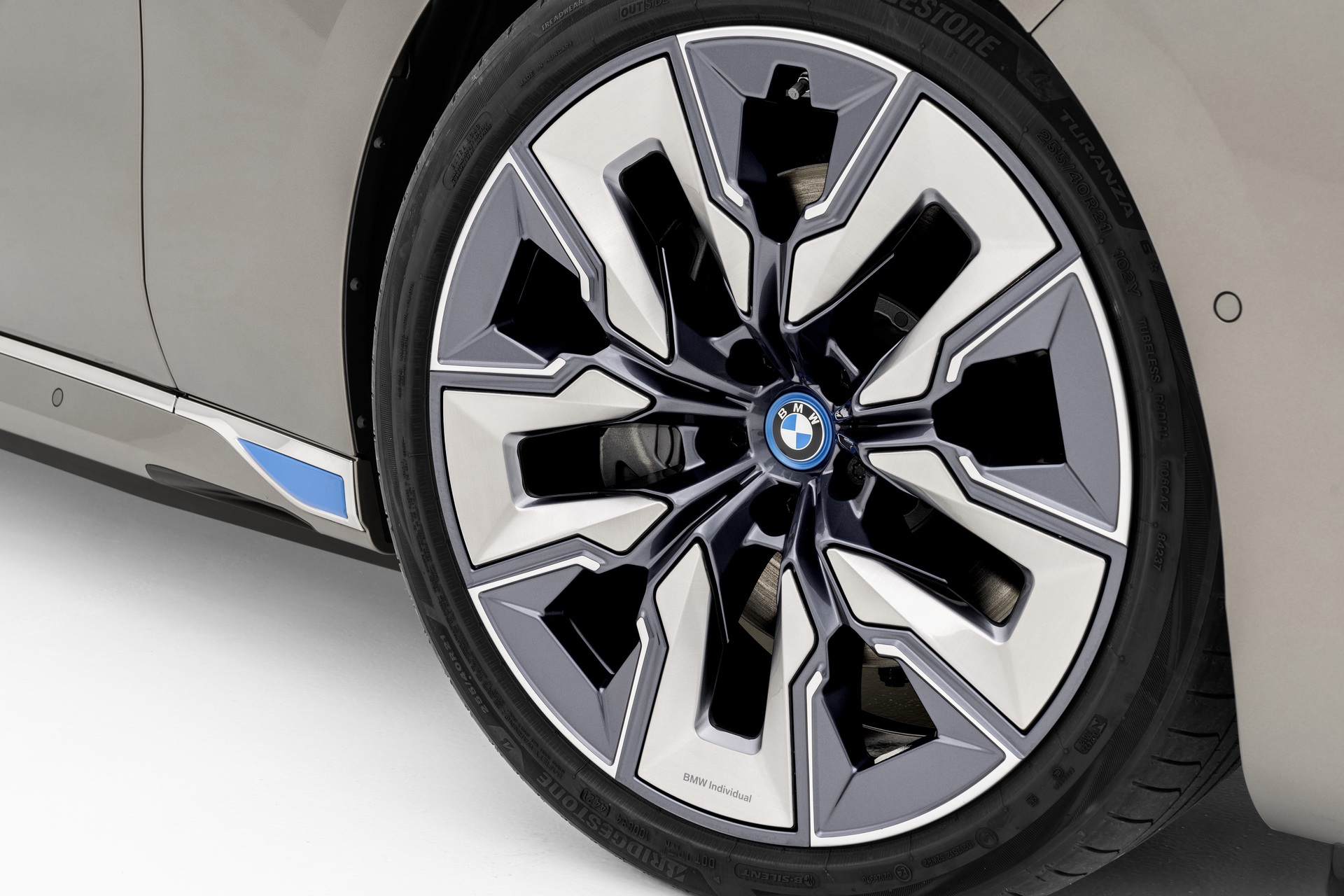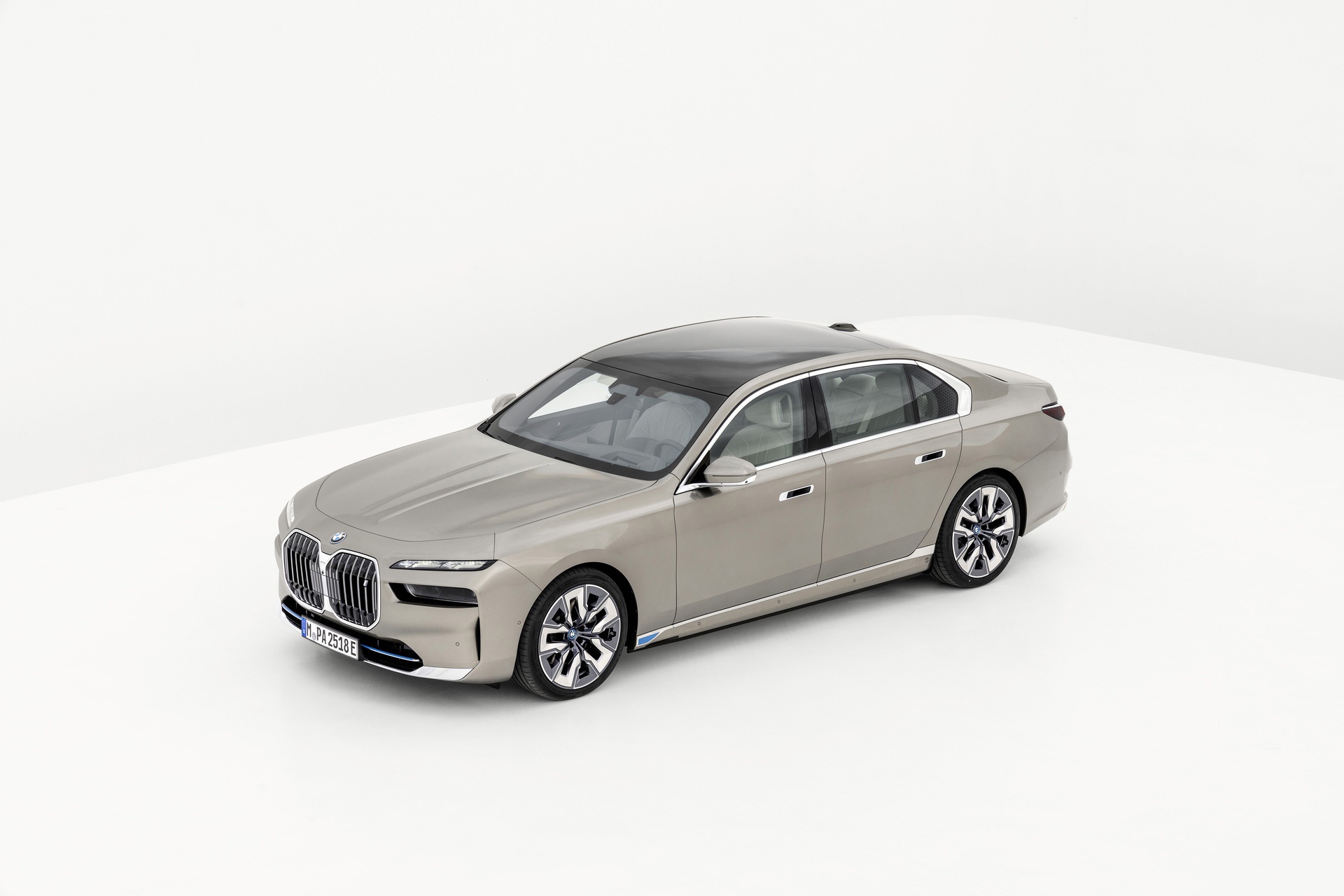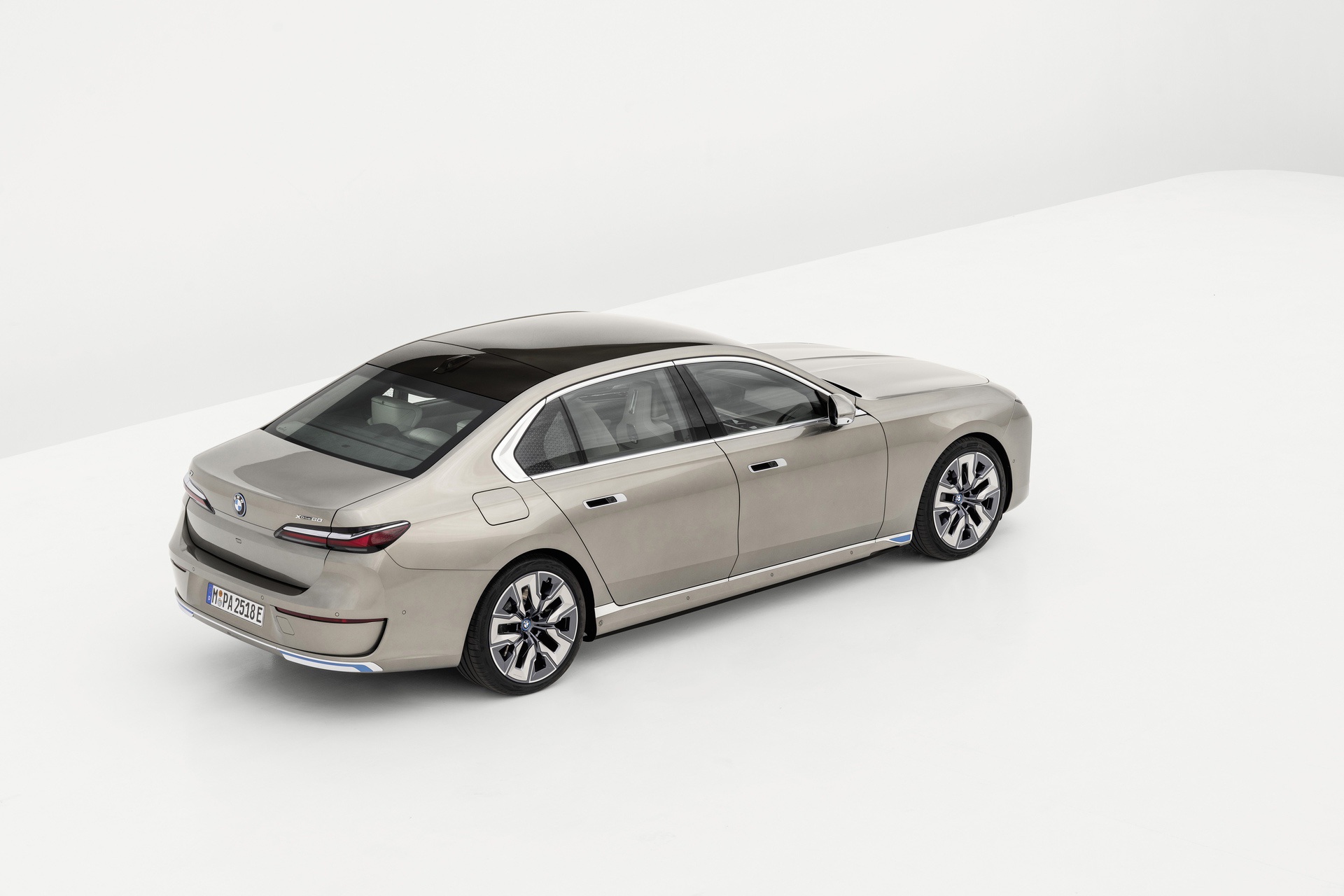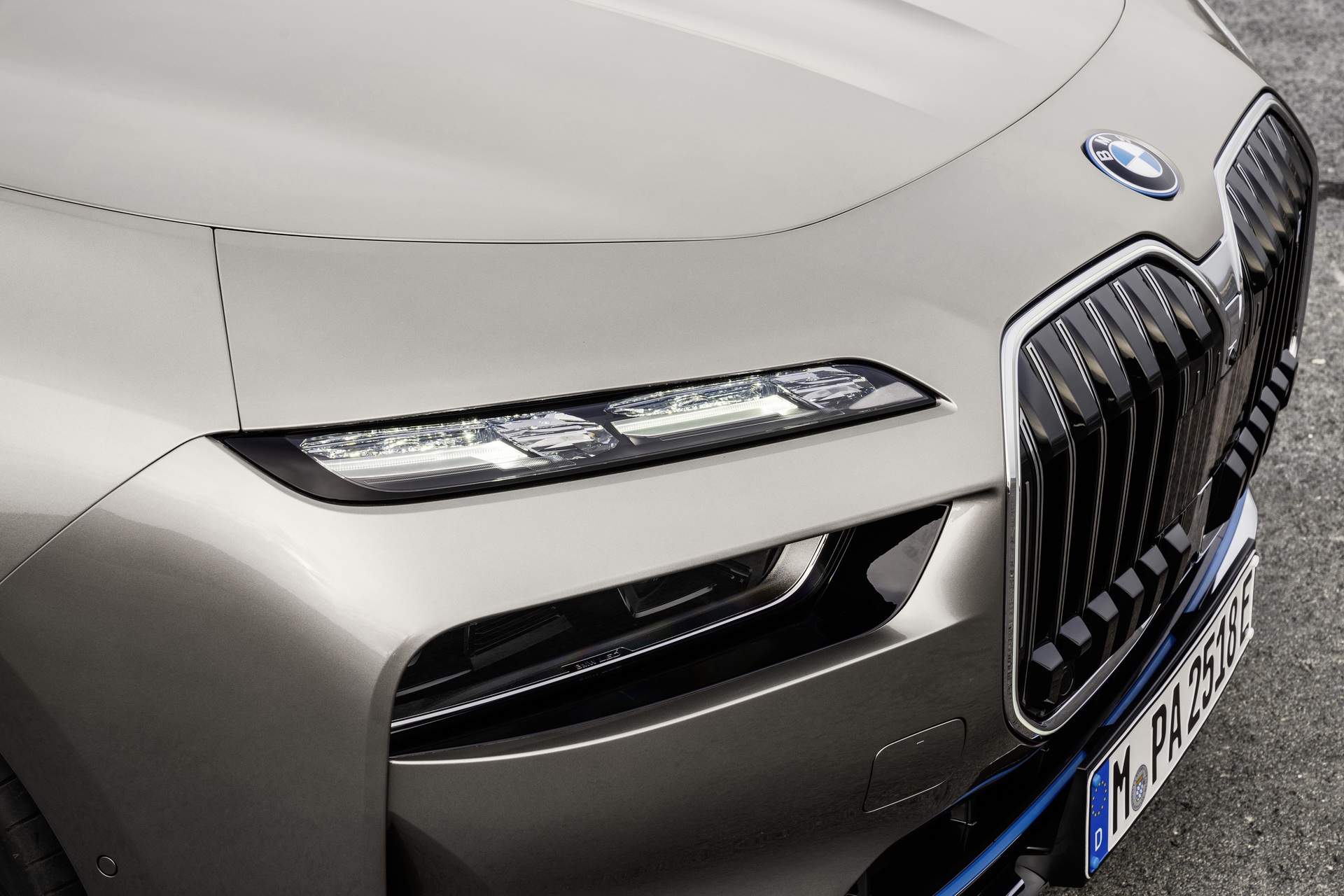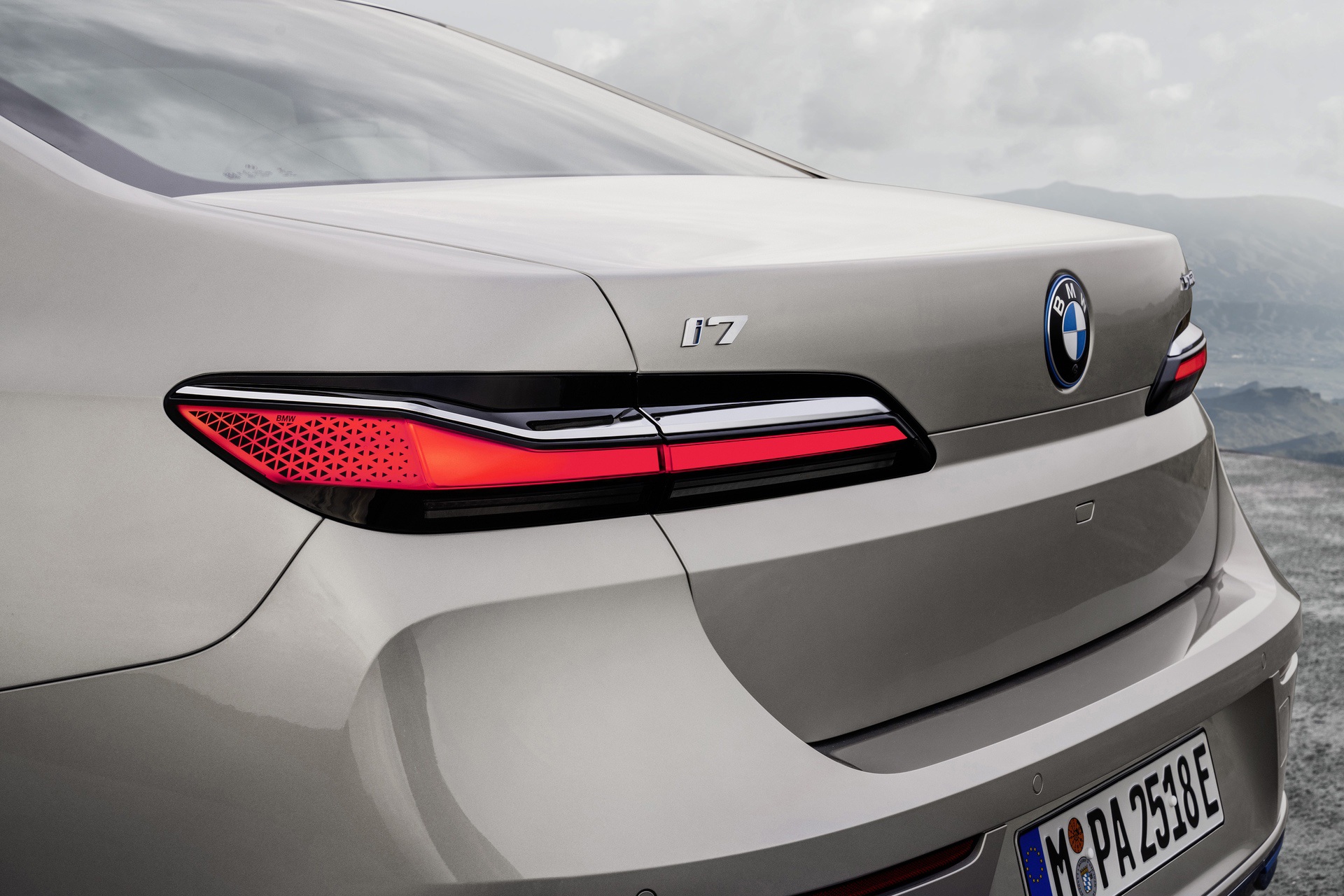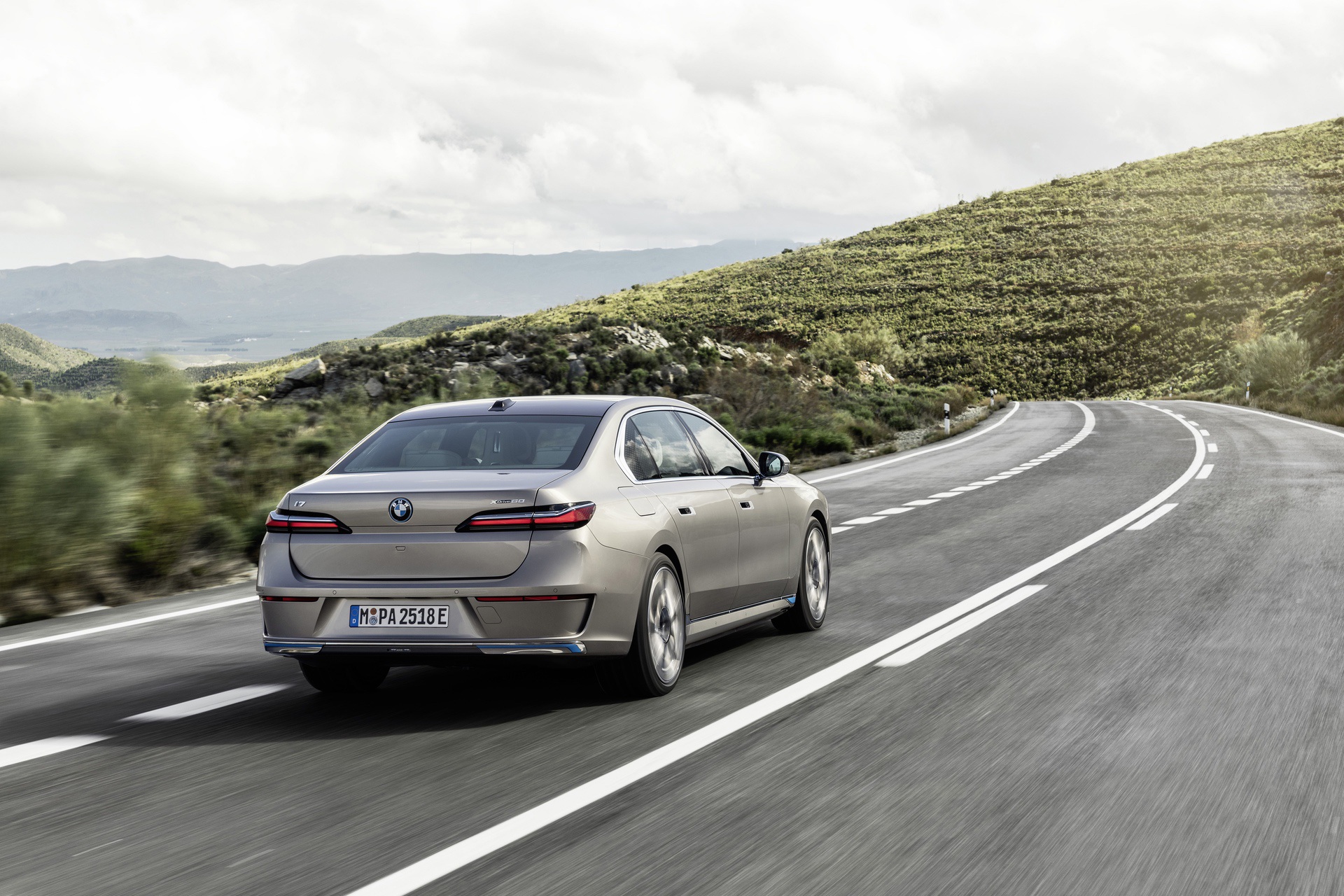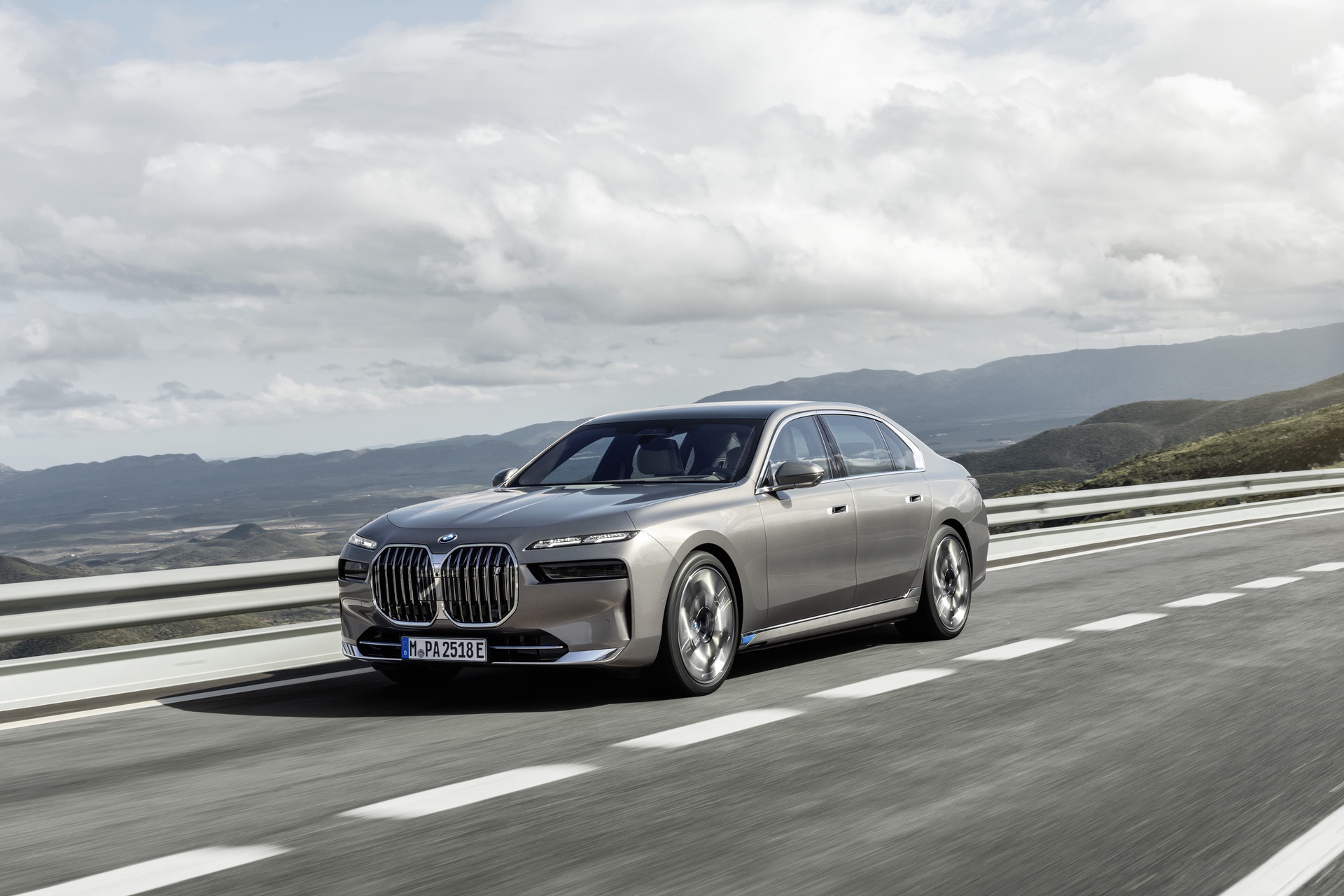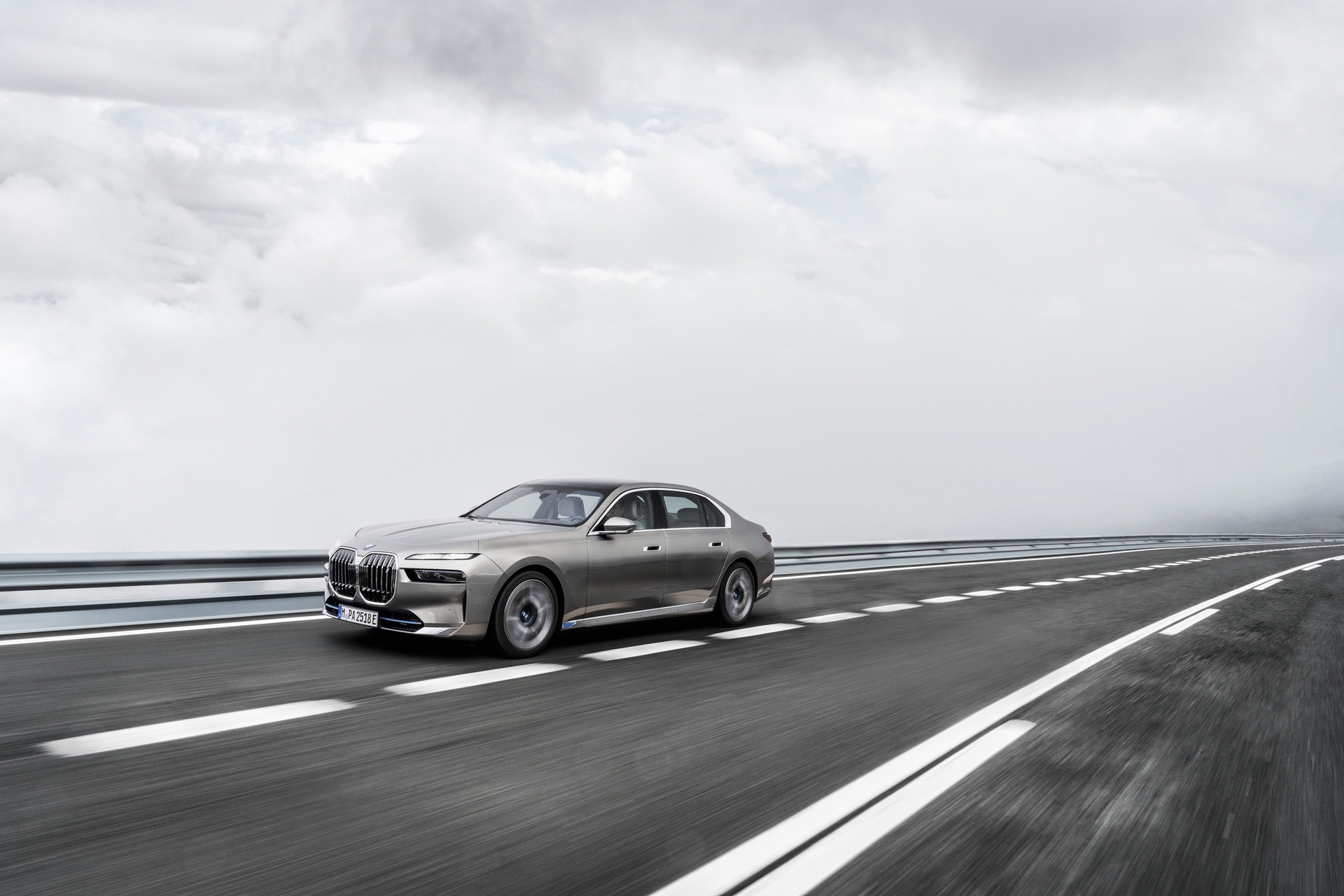Alongside the all-new 7 Series, BMW launched what is arguably the most important version of its new flagship luxury car — the BMW i7. From the outside, it’s easy to say the i7 is just a 7 Series with its engine thrown out and some electric motors tossed in. Okay, so it kind of is that, actually but that’s a crude way of putting it. In reality, the BMW i7 is the most technologically advanced, most luxurious car the Bavarian brand has ever made and it’s the car BMW needs to lead it into the future.
Base MSRP for the 2023 BMW 740i is $93,300 + $995 destination. The 2023 BMW 760i xDrive starts at $113,600 + $995 destination and the BMW i7 xDrive60 sells for $119,300 + $995 destination. US market launch to commence in Q4 2022.
Radical New Design
Looking at the BMW i7, it looks a lot like the 7 Series, almost identical in fact. That was intentional. BMW’s design team didn’t want customers choosing between the two cars based on style or design. Instead, the Bavarians wanted their customers to choose the 7 Series and then just pick their powertrain.
Up front, both the BMW i7 and 7 Series have the same grille and the same new split headlights. Sure, some model variants have subtle variations, such as the 760i’s dark trim around the grille, but they’re all the same, for the most part. The new split headlight design also looks great, giving the front end more visual verticality, which reduces the visual impact of the large grille. Despite being bigger and brasher than the previous-gen 7 Series, this new front end design is actually better looking and less offensive.
One neat little visual trick up the i7’s sleeve is its LED-lit grille trim. Rather than the sort of waterfall lighting effect from the X7’s and X6’s kidney grilles, the i7 actually lights the grille surround trim and it’s far more visually interesting than the aforementioned cars’ grille lighting.
The split headlights do exactly what they say they do on the box — the split the lighting jobs up. The upper portion of each headlight is responsible for daytime running lights and turn signals but has also been designed to represent BMW’s signature dual light effect. Underneath, the lower portion is responsible for the main and high beams but is also tinted, so as to sort of hide in the background until needed.
Down the sides of the car, flush door handles, aerodynamic wheels, and honest-to-goodness Hofmeister Kinks flank the BMW i7. It also gets fancy Rolls-Royce-like automatic doors, which open and close at the push of a buttons. Those aerodynamic wheels are big, too, sitting at 19″ as-standard, with 20″ and 21″ wheel options, including M Performance wheels.
However, it’s inside the i7 that gets truly interesting. Again, much like with the exterior, BMW didn’t want customers to have to sacrifice any sort of interior luxury or comfort by choosing either the gas-powered 7 Series or the all-electric i7. So the cabins are pretty much identical. But that’s no bad thing.
Front passengers are treated to an all-new dashboard layout that includes lighted crystal-like trim, dubbed the “Interaction Bar”, that can change colors and is one of the more unique features of any BMW interior in history. Not only can the driver customize its color scheme but they can also choose how it reacts to certain events, such as phone calls or welcome/goodbye effects.
Much like the BMW iX, the i7 also gets a two-spoke steering wheel but this time it isn’t hexagonal and has a flat-bottom. Also like the iX, the center console features a toggle switch gear selector and the same array of buttons and rotary wheel. Ahead of that little gang of buttons and switches lie two cupholders, which are individually covered. It’s an unusual design; not a bad one or a good one, just very different; but it looks interesting and each cupholder is both heated and cooled.
Handling all of the tech up front is BMW’s iDrive 8. It’s the exact same system found in the BMW iX and X7 LCI, which means the i7 gets the same new infotainment system and the same digital driver’s display screen, both of which are attached at the hip.
Move to the back and the tech multiplies. Rather than just one screen, passengers get up to three, one of which is optional and bigger than all other BMW i7 screens put together. In a standard BMW i7 backseat, there are two screens, one in each of the rear door panels, located just ahead of the armrest. Those screens control anything rear passengers could want; ambient lighting, climate control, sun shades, and the sunroof. Anything that can be controlled is controlled by said screens.
However, if you add the Theater Screen option, you get a massive 31″ 8k widescreen display that folds down from the headliner of the car for a literal theater-like effect. It features built-in Amazon Fire TV, which allows passengers to watch any sort of streaming content they can imagine, through the car’s own 5G data connection. Being Fire TV-based, your home Amazon Fire TV app data transfers to the car, so if you’re watching a movie at home, pause at any point and get in the car, the movie will resume playing from the same spot in the back of your i7.
When using the Theater Screen, rear passengers can listen to their movies or shows using either the all-new optional 36-speaker, 1,965 watt Bowers & Wilkins Diamond Surround Sound System, with 4D audio technology that uses exciters in the front and rear seat rests. If you don’t spec that option, you still get a Bowers & Wilkins system, but it’s 18-speakers and 655 watts. Or, rear passengers can use Bluetooth headphones to listen, if they choose to do so privately.
Using that same data connection, the BMW i7 — and the entire 7 Series lineup — can become a device on your T-Mobile service plan. Which means if you connect your car to your plan and your phone dies or breaks, you can just make calls and send texts with your i7. It’s like having a car phone all over again, just better.
Forget Tech, Let’s Talk Speed
Unfortunately for you tech-hating, horsepower loving, old-school car enthusiasts, tech and speed are one and the same, in the i7. The BMW i7 xDrive60 is powered by dual electric motors, made using no rare earth materials at all. Maximum power output is 536 horsepower and 549 lb-ft of torque, which ironically (or not so ironically) gives it the same horsepower as the BMW 760i. According to BMW, 0-60 mph happens in 4.5 seconds and the i7 has a top speed of 149 mph.
Those two electric motors, which provide torque-vectoring all-wheel drive, get their energy from a 101.7 kWh (usable) battery pack, which is said to be capable of up to 300 miles of range. That range figure is a BMW-estimated figure, based on EPA testing procedures.
Charging the BMW i7 is similar to charging the BMW iX. It can be charged at 11 kW AC, or at up to 195 kW on a DC fast charger. However, what makes the i7 different from its taller sibling is its flatter charging curve. Due to improved cooling and software efficiency, the BMW i7 can charge at 195 kW for longer than the iX, which allows it to recoup 80 miles in just ten minutes. BMW has also partnered with Electrify America, to provide all i7 customers with three years of unlimited 30-minute fast charging sessions, enough to almost completely recharge the battery.
Without question, the BMW i7 is the most advanced flagship vehicle the brand has ever produced. It takes the 7 Series’ claim of being the most luxurious BMW of all time and adds to it, by having the most high-tech powertrain of them all. When 7 Series customers walk into dealerships, they’ll have the choice of getting a car that looks and feels exactly like the standard 7 Series, just with a quieter, smoother, and more polar bear-friendly powertrain.


